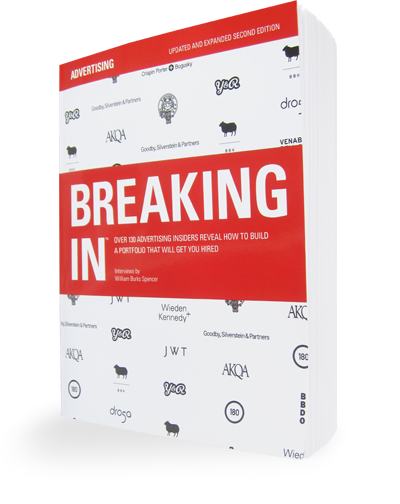In case you missed it, check out some great work from Eitan Chitayat.
WS: What do you look for in a student book? And what impresses you?
EC: To say I look for something original wouldn’t be very original at all. What I like most is just people who aren’t afraid. A lot of books are cookie cutter. A lot of them are the same. I don’t think that means what they have isn’t good work. But I like to see stuff that’s different. Someone who took a risk. Not for shock value. It has to be good, obviously. Otherwise you end up looking bad.
I like writers who can art-direct and art directors who can write. That’s impressive and important. What you’ll sometimes get in real-world advertising is, ”Let’s come up with the idea and then I’ll take care of the art direction and you take care of the copy” or vice versa. I enjoy working with people who won’t draw a line. I’m a writer but I’m very passionate about design, too. And I love working with art directors who can sit down and say, “Let’s write it like this.” They’ll be just as involved with the writing as l will be in the art direction. And nowadays, with new media and, more than ever, lines should be blurred, or even not there at all in some cases.





